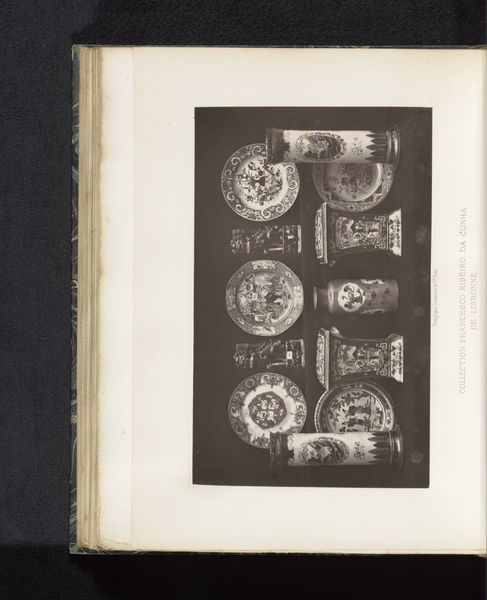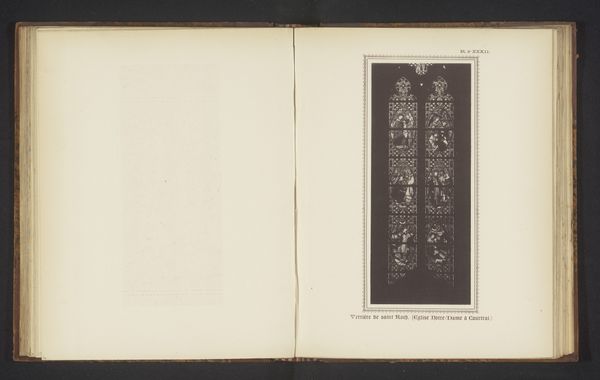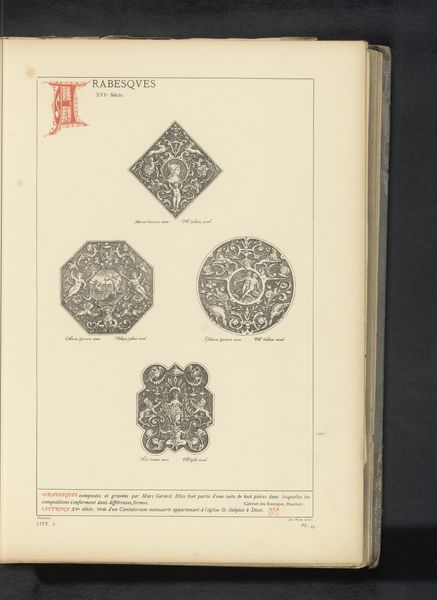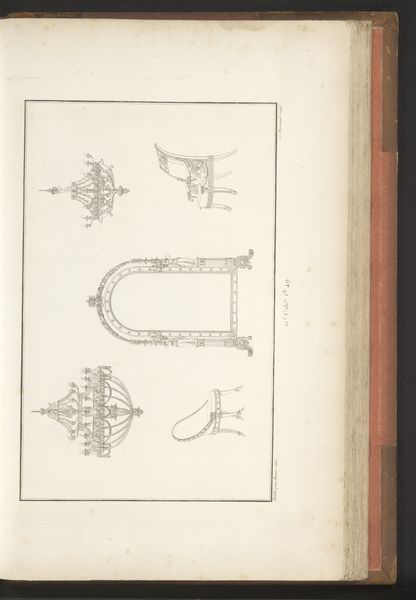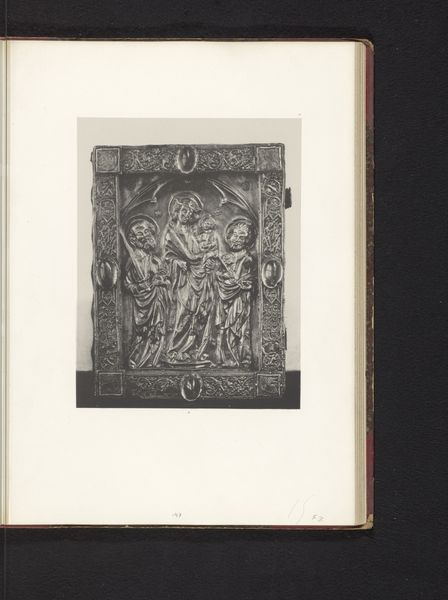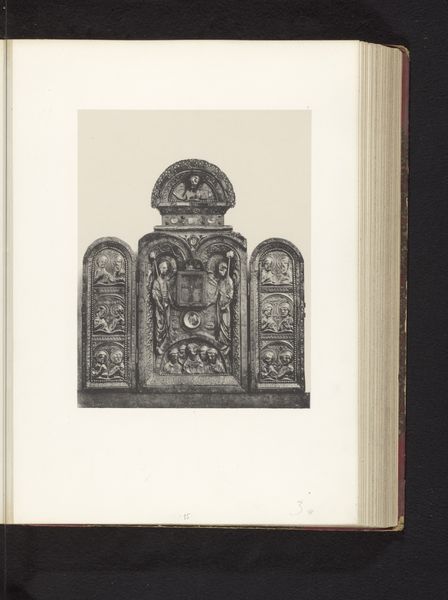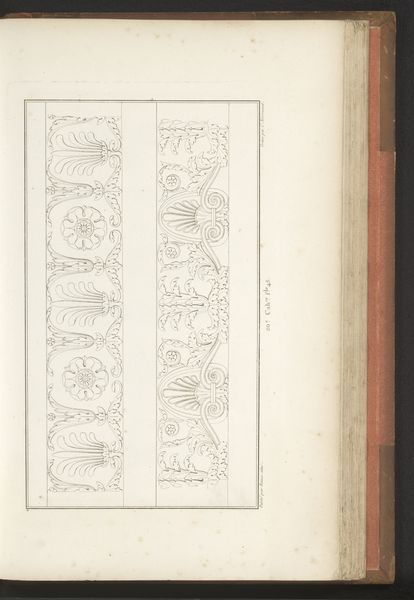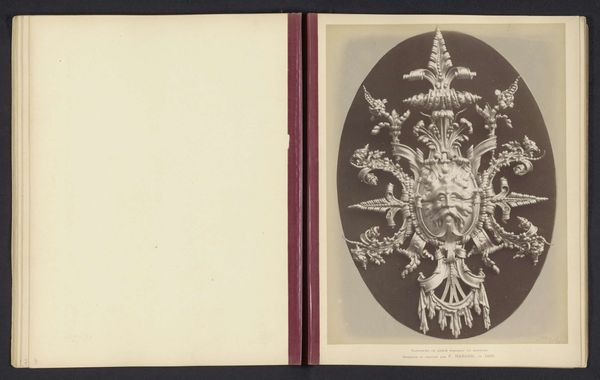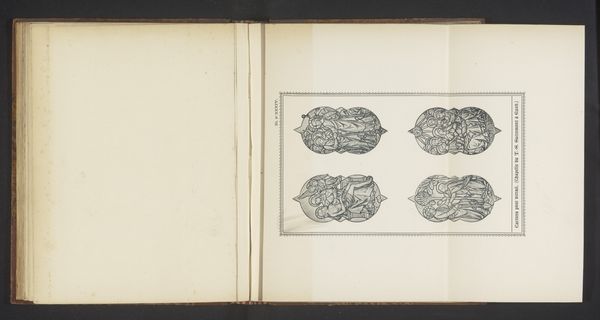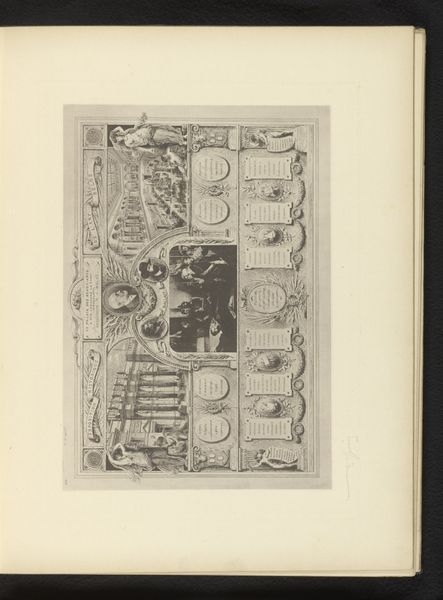
Vijf reliëfs van hout met Bijbelse voorstellingen, opgesteld op een tentoonstelling over religieuze objecten uit de middeleeuwen en renaissance in 1864 in Mechelen before 1866
0:00
0:00
drawing, carving, print, relief, wood
#
drawing
#
medieval
#
carving
# print
#
relief
#
woodcut effect
#
carved into stone
#
embossed
#
wood
#
pattern repetition
Dimensions: height 224 mm, width 166 mm
Copyright: Rijks Museum: Open Domain
Curator: Here we see a printed image, likely from before 1866, reproducing five wooden reliefs with biblical scenes. The image is credited to Joseph Maes and depicts an exhibition from 1864 in Mechelen. What's your first impression? Editor: The effect is almost ghostly. These small carvings, displayed against the stark page, seem to hover between preservation and obsolescence. There’s a clear reverence for the medieval aesthetic, yet the monochromatic presentation flattens them somehow, stripping them of their tactile qualities. Curator: It's interesting how you note the flattening, given the image actually documents an exhibition that deliberately invoked historical and religious sentiment during a period of nation-building in Belgium. Exhibitions like this sought to construct a cohesive national identity, drawing heavily from a romanticized past, especially medieval art and religion. Editor: Precisely. Consider the motifs themselves. We see familiar scenes: Christ enthroned, perhaps a crucifixion, the Virgin and Child. These weren’t just aesthetic choices. The repetition of these recognizable motifs anchored cultural memory; it connected contemporary viewers to what they were expected to understand as the foundation of their shared Christian European identity. Curator: Exactly. Furthermore, placing these objects—originally meant for private devotion or ecclesiastical settings—into a public exhibition transformed their function. They became artifacts within a larger narrative designed to instill national pride, obscuring their individual histories and significance in favor of a grander, perhaps politically motivated, tale. Editor: And in rendering these objects as flat images, even the texture and the lived historical context become secondary. Consider how this shift might have influenced perceptions of the past, flattening complex narratives into simplified visual emblems. Curator: This reminds us that even the act of displaying art is never neutral. It’s always entangled with cultural, political, and ideological considerations, deliberately creating narratives around the exhibited items. Editor: It prompts questions about how we build identity and memory and about whose stories get highlighted. This ghostly print reveals a powerful message about cultural heritage as both preserved and presented.
Comments
No comments
Be the first to comment and join the conversation on the ultimate creative platform.
